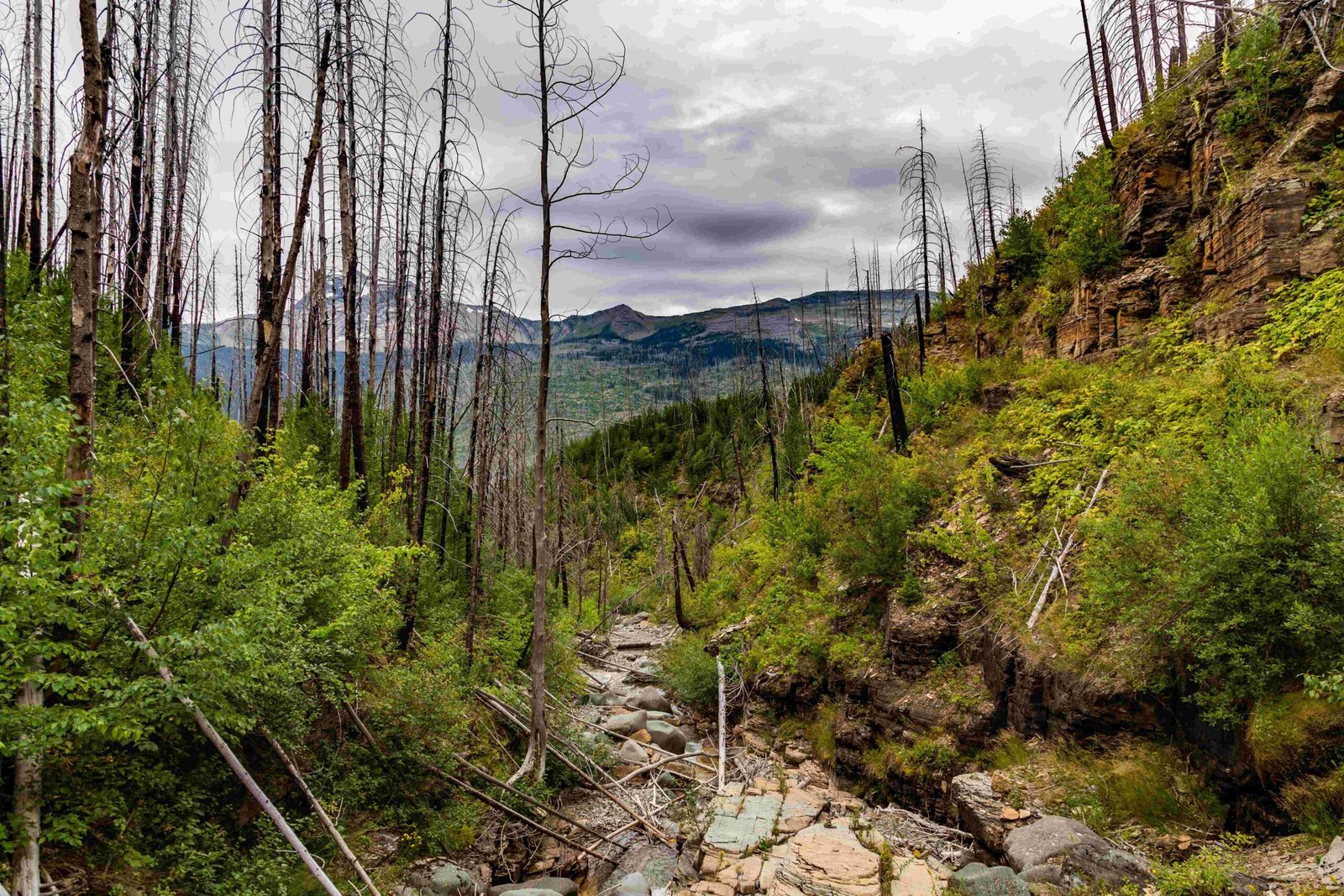Glacier National Park in Canada, established in 1886, is a breathtaking wilderness area covering 1,349 square kilometers in the Columbia and Selkirk Mountains. Home to 131 glaciers, diverse wildlife, and one of Canada’s largest cave systems, this park offers unique geological features and rich biodiversity. Its history is intertwined with the Canadian Pacific Railway and Trans-Canada Highway, making it a testament to both natural beauty and human ingenuity.
What Makes Glacier National Park Canada Geologically Unique?

Glacier National Park Canada boasts an array of geological wonders that set it apart from other national parks:
- 131 glaciers covering 133 square kilometers
- High mountain peaks including Hermit, Cheops, and Sir Donald
- U-shaped valleys formed by ancient ice sheets
- The Nakimu Caves, part of one of Canada’s largest cave systems
- Numerous canyons, turbulent rivers, and waterfalls
These features create a diverse landscape that attracts geologists, nature enthusiasts, and adventurers alike.
How Rich is the Biodiversity in Glacier National Park Canada?

The park’s varied ecosystems support a wide range of flora and fauna:
- 235 observed bird species, with 30 year-round residents
- Large mammal populations in dense forests
- Alpine species adapted to high-altitude environments
- Diverse plant life in flower-filled meadows
This biodiversity makes the park a crucial conservation area and a paradise for wildlife watchers.
What Historical Significance Does Glacier National Park Canada Hold?
Glacier National Park Canada’s history is deeply connected to Canada’s transportation development:
- Established in 1886, shortly after the completion of the Canadian Pacific Railway
- Rogers Pass, a major transportation route, runs through the park
- The Trans-Canada Highway, completed in 1963, further increased accessibility
- Early tourism led to the construction of alpine hotels
This historical context adds layers of human interest to the park’s natural beauty.
What Are the Must-See Landmarks in Glacier National Park Canada?
Visitors to Glacier National Park Canada should not miss these iconic landmarks:
- Illecillewaet Glacier – One of the most photographed glaciers
- Nakimu Caves – An extensive underground cave system
- Rogers Pass National Historic Site – A testament to transportation history
- Alpine meadows – Bursting with colorful wildflowers in summer
- Turbulent rivers and waterfalls – Showcasing the power of glacial meltwater
Each of these landmarks offers unique experiences and photo opportunities.
How Can Visitors Experience Glacier National Park Canada?
Glacier National Park Canada offers various ways for visitors to explore and enjoy its natural wonders:
- Hiking: Extensive trail network for all skill levels
- Camping: Three campgrounds available
- Backcountry exploration: Four huts and cabins for adventurous travelers
- Wildlife viewing: Opportunities to spot large mammals and diverse bird species
- Photography: Breathtaking alpine panoramas and glacial landscapes
- Geological exploration: Observe unique glacial features and formations
Visitors should check with park authorities for current conditions and guidelines before planning their trip.
What Conservation Efforts Are Ongoing in Glacier National Park Canada?
Glacier National Park Canada is at the forefront of conservation efforts:
- Glacier monitoring: The park’s glaciers are among the most studied in North America
- Climate change research: Ongoing studies on the impact of global warming on glacial retreat
- Biodiversity protection: Management strategies to preserve the park’s unique ecosystems
- Visitor education: Programs to raise awareness about conservation and responsible tourism
These efforts aim to preserve the park’s natural wonders for future generations.
How Has Climate Change Affected Glacier National Park Canada?
Climate change has had significant impacts on Glacier National Park Canada:
- Glacial retreat: Many glaciers have shrunk considerably since the park’s establishment
- Changing ecosystems: Shifts in plant and animal habitats due to warming temperatures
- Increased fire risk: Longer, drier summers have heightened the danger of wildfires
- Altered water flows: Changes in glacial melt patterns affect rivers and aquatic ecosystems
| Climate Change Effect | Impact on the Park |
|---|---|
| Glacial retreat | Loss of ice coverage and changes in landscape |
| Ecosystem shifts | Alteration of plant and animal habitats |
| Fire risk | Increased danger during dry seasons |
| Water flow changes | Affects rivers, streams, and aquatic life |
Understanding these changes is crucial for both park management and visitor awareness.
What Are Some Lesser-Known Facts About Glacier National Park Canada?
Here are some intriguing facts that many visitors might not know about Glacier National Park Canada:
- The park is home to some of the continent’s oldest rocks, dating back over a billion years
- Snow can fall in the park during any month of the year due to its high elevation
- The Nakimu Caves were discovered in 1904 and extend for over 6 kilometers underground
- Rogers Pass was once considered the most dangerous section of railway in North America due to avalanches
- The park’s glaciers often appear red in summer due to the presence of snow algae
These facts highlight the park’s unique geological and biological characteristics.
Glacier National Park Canada stands as a testament to the raw beauty of nature and the importance of conservation. From its towering peaks and ancient glaciers to its rich biodiversity and historical significance, the park offers a wealth of experiences for visitors and continues to be a crucial area for scientific study and environmental preservation.
References:
1. Glacier National Park | Hiking, Wildlife, Camping | Britannica
2. Glacier National Park (Canada) – Wikipedia